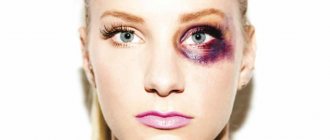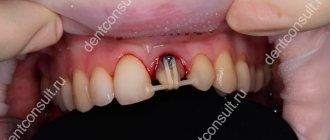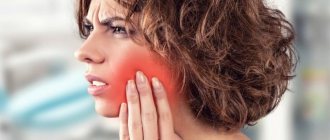Arsenyev Alexey Olegovich
Vascular surgeon, phlebologist, Ultrasound doctor
October 25, 2021
Of course, subcutaneous hemorrhage or bruising on the body can look unsightly and cause aesthetic discomfort. If this is an isolated situation, then, as a rule, there is nothing wrong with it. If the situation repeats: bruises occur in different places and, perhaps, complaints appear in other organs and systems (for example, pain in the heart, joints), then you should figure out why the vessels burst on the legs or body, as this may be a manifestation one of the more serious pathologies.
Symptoms of manifestation
Bruises on the face are difficult to ignore. It is characterized by knowledge of all standard symptoms, such as:
- Painful sensations in the facial area. And they are usually felt strongly because the ends of the facial nerves are among the most sensitive;
- Tissue swelling. This manifests itself as swelling of the skin, which may appear thickened upon palpation. The severity of edema depends not only on the severity of the injury, but also on the thickness of the skin and the internal structure of the tissues. Therefore, the area around the mouth and face is most susceptible to swelling;
- Bruises, bruises and hematomas. They arise as a result of damage to blood vessels and the accumulation of platelets in the damaged area. It’s worth saying right away that the deeper they are under the skin, the later the reaction will appear, but, unfortunately, the longer it will take. For this reason, many people start using ointments and gels for bruises even before visible signs appear;
- Feeling numb. This occurs in cases where the fibers of the facial nerve were directly affected during the injury. If nerve damage is very severe, there is a risk that reduced nerve activity may persist;
- Disruption of various areas of the face. Examples include: inability to see if the eye is swollen, difficulty breathing if the nose is injured, difficulty chewing food if the jaw is injured;
- Open bleeding. Observed when the skin is damaged at the site of the bruise and there is an open wound or deep scratch;
- Nausea, vomiting, loss of consciousness, convulsions. Such serious symptoms can occur if a bruise of the soft tissues of the face is accompanied by a traumatic brain injury and, as a consequence, impaired brain function.
Bruises and bruises are symptoms of contusion of the soft tissues of the face.
Of course, each of these symptoms may vary in severity in each individual case. Much depends on the individual characteristics of the body, such as the thickness of the skin or the elasticity of blood vessels. So, with one type of injury, one person may only have swelling, while another may have a severe hematoma.
How to relieve swelling after a blow
After a bruise, hematoma and swelling can form. It is more common for a common person to call it a bruise or a tumor. If measures are not taken in time and it is not removed, it will cause not only cosmetic defects, but also physical discomfort.
In the first minutes
You can relieve swelling after an impact by applying a cold compress or any cold object. This action will be effective in the first minutes. Then you can make lotions from medicinal herbs, for example, plantain, yarrow, wormwood, tansy, heather or St. John's wort.
To relieve swelling after an impact and cure a hematoma, you need to make a herbal decoction, soak a bandage in it and apply a compress. The compress should be cold; heat can only worsen the process.
Strong cold green tea will also help relieve swelling after an impact; a compress can also be made from it. You can get rid of pain with onion juice. You can also treat swelling with compresses made from vinegar or sour cottage cheese.
If the folk remedy does not help relieve swelling and bruising in a short time, then you need to contact an experienced specialist. After all, the problem can be much more serious than a simple bruise, especially if a hematoma has formed on the face. Then a special anti-edema ointment, massage or physiotherapy will be prescribed.
If a lump appears
If a dense lump forms after the blow, this is also a consequence of traumatic tissue swelling and the accumulation of blood clots. You can also get rid of it quickly. Blood from burst vessels can accumulate in the muscles, and sometimes swelling envelops the bone. To quickly get rid of a lump, there will be few folk recipes; you will need to use a remedy such as:
- Troxevasin ointment;
- heparin ointment;
- iodine network;
- compress with Magnesia.
A large seal will help remove the scalded cabbage leaf with honey. The sheet should be applied to the sore spot, bandaged with a towel, and left for a couple of hours. The hematoma will also go away faster.
First aid
First aid is recommended for injuries to the soft tissues of the face, regardless of the force of the blow. Here are three basic steps in this situation:
- Place something cold on the bruised area. This could be ice, snow, a compress soaked in cold water, or even a chilled metal spoon. Cold helps constrict blood vessels, reducing the risk of bruising under the skin. However, there are two things to keep in mind. Firstly, facial skin is quite thin and cannot be exposed to prolonged exposure. The optimal time is 15-20 minutes. The procedure can be repeated after 2 hours. Use material that protects the receptors from hypothermia. The second point is that the effectiveness of this method is available only in the first half hour after injury;
- If there are signs of skin trauma, be it wounds or abrasions, it is important to treat them with antiseptics. The most common of them are the well-known hydrogen peroxide, herbs, and a very weak solution of manganese solution. This must be done very carefully, since every touch to the wound can cause pain to the victim;
- Anesthesia. If the sensations are strong, you should turn to painkillers. Among them are Ketone, Ketorol, Ibuprofen. Before use, be sure to read the instructions.
First aid for bruised soft tissues of the face includes applying ice.
In most cases, the listed first aid measures for bruises are sufficient. However, if the injury is much more serious and the victim experiences heavy bleeding or convulsions, then the first step is to call an ambulance. When traveling, control bleeding with a tourniquet or position the person so that they do not risk swallowing their tongue.
It is important to remember that the method of providing first aid will affect the result of further treatment of facial bruises and the likelihood of developing complications.
Folk remedies
There are several proven, simple and at the same time effective ways to have the positive effects of alternative medicine. They are indispensable products for pregnant women, children, as well as people who have a severe allergic reaction to medications. You can make a choice based on personal preferences or doctor’s recommendations.
Treatment at home for bruises can be carried out using the following means:
- Table salt solution. Compresses are prepared from it, which are used for any complexity of bruises. To prepare, a tablespoon of salt is dissolved in 150 ml of boiled water. Then take a sterile bandage, soak it in the solution and apply it to the problem area. The compress is covered with a thick cloth on top. The gauze pad with salt can be left overnight.
- Grated potatoes. The tubers should be washed and cleaned first. Grate one tuber on a coarse grater, place in linen cloth and wrap several times. After applying the bruise, cover the top with a thick towel. Compressor exposure time is 30-40 minutes. For best results, make 3-4 applications in a row.
- Cabbage leaf. Before applying it, you should knead it a little or make cuts on it to let the juice out. The sheet is applied to the sore spot 2-4 times a day until it dries completely.
- Onion and garlic. The two ingredients are ground and mixed together. The resulting slurry is added with half a tablespoon of salt; it is recommended to wrap the mixture in gauze and place it in the area of the bruise.
- Beetroot and liquid honey. Finely grated root vegetables are mixed with a tablespoon of natural honey. The procedure is carried out 1-2 times a day for 2 hours.
- Laundry soap. This remedy helps reduce the pain response. The soap is grated and mixed with raw chicken yolk. I apply a compress every half hour up to 6-8 times a day. You can also rub a damp cloth with laundry soap and apply an application to the bruised area.
- Apple vinegar. This is one of the most effective remedies. To prepare the solution, you need to take 2 teaspoons of vinegar and dilute it in 1 liter. water. Soak a clean cloth in the solution and apply 3-4 times a day for half an hour.
Popular folk remedies for bruises
The video in this article shows how to properly apply a warm and cold compress for bruises.
Diagnostics
A bruise is easy to diagnose, but only doctors can determine its severity and possible complications. Therefore, if for any reason the injured area is bothering you, it is better not to waste time and seek professional help. The diagnosis can be made:
- inspection;
- palpation;
- Assessment of symptoms and complaints;
- In some cases, an ultrasound or x-ray examination may be required.
Diagnosis consists of determining not only the presence of a bruise, but also its severity. There are four degrees:
- First degree. This is the easiest and least dangerous option, involving a slight change in the structure of the subcutaneous tissue. There is no bleeding or hematoma, but blue skin discoloration is quite possible. For the first degree of injury, visiting a doctor is usually not required. It is quite possible to limit yourself to home remedies, which, with the right approach, will help eliminate symptoms in 5-7 days;
- Second step. In this case, significant damage to the subcutaneous and muscle tissue occurs. Severe swelling, pain and even hematoma may appear. It is better to treat such a bruise with medications together with physiotherapeutic procedures;
- Third degree. It damages not only muscle tissue, but also tendons. In some cases, the integrity of the skin may be compromised. Since there is a risk of developing an infectious process, examination by a doctor is mandatory.
- Fourth degree. This is the most severe and dangerous degree of injury. It is always accompanied by injuries not only to soft tissue, but also to bone tissue. In this case, there is a high risk of developing various types of complications. It is imperative to seek qualified medical help.
Accordingly, the type of treatment will directly depend on the degree and nature of the bruise.
Causes of bruises in the maxillofacial area
Most injuries occur unexpectedly and to varying degrees of severity.
Most often they are observed in the following cases:
- falling onto a hard surface;
- due to collision with objects;
- various impacts (road traffic accidents, domestic fights, contact sports).
Falls are the most common causes of injuries to the maxillofacial area
The severity of such injuries largely depends on the affected area, the type of object that affected the bone tissue and age-related changes in facial tissue.
Treatment
Treatment methods for bruises can be divided into two large groups: traditional in the form of drugs and treatment methods, and non-traditional in the form of traditional medicine. Ideally, you can combine techniques from both groups. This solution will help you get rid of bruises in less time.
Medication
If the situation does not require hospitalization, the bruise is treated using standard methods. Namely:
- Preparations for external use: gels, ointments, creams;
- Physiotherapeutic procedures. These include electrophoresis, heating, laser therapy. All these procedures are aimed at eliminating subcutaneous clots and stimulating skin regeneration.
Creams, ointments, and other treatments for bruises are widely available.
In every pharmacy you can find a huge selection of such products. But when choosing, it is important to pay attention to the composition, influence and age restrictions. Not all products are suitable for children.
With regular and correct use of the ointment, you can get rid of bruises and swelling within a few days. And if you supplement your treatment with physical therapy, you can expect results even faster.
Traditional methods
Bruises and bruises can also be treated with traditional medicine. The only rule is that you can start using them a few days after the injury.
Among the folk recipes for bruises and bruises on the face it is worth mentioning:
- Cabbage leaf or raw potato. They should be applied to the damaged area. Thanks to this, swelling quickly decreases;
- Honey. Has a good laxative and anti-inflammatory effect. You can even not limit yourself to the area of the bruise, but apply honey all over your face, creating the appearance of a mask;
- Camphor oil. To obtain the effect, it must be applied with light rubbing movements;
- Compresses. It is best to cook them with onions or salt;
- Alcohol-based compresses. In this case, the rosemary plant can be the basis. Has a warming and antiseptic effect;
- Arnica decoction. This measure is applied not externally, but internally. It not only strengthens the immune system, but also stimulates regenerative processes.
Applications with honey are a folk method for treating bruises of the soft tissues of the face.
And, of course, one should not underestimate the influence of standard massage measures in the form of light stroking and rubbing.
Elements of treatment and means used
Immediately after injury, first aid must be provided. Usually, all bruises of the upper and lower jaw can be treated quite well without medical intervention. However, in case of severe lesions, it is still worth contacting specialists for examination.
Table No. 1. Painkillers:
Name of the drug Active substance Additional action Directions for use
Ketonal
Ketoprofen. Anti-inflammatory and decongestant. Apply a thin layer to the skin 2-3 times a day.
Fastum gel
Ketoprofen. Anti-inflammatory, improves blood circulation. Rub in the gel until completely dry 2 times a day.
Dolgit
Ibuprofen. Relieves swelling and inflammation. Apply with gentle massage movements, 3 times a day, up to 3 weeks.
Finalgon
Nonivamide, Nicoboxil. Improves blood circulation, recommended on the 3rd day after injury. After application, it is recommended to cover the affected area with a warm cloth.
Indomethacin
Indomethacin. Anti-inflammatory. Children apply no more than 1 cm of gel, adults no more than 15 cm, 2 times a day.
First of all, cold is applied to the lesion. Low temperatures will help not only relieve swelling and stop bruising, but also provide partial pain relief.
For the most effective elimination of unpleasant sensations, it is necessary to take analgesics internally or apply special ointments externally. Modern drugs are available in the form of gels. They are easy to use, absorb quickly and do not stain clothes.
It is good to use products that contain Heparin. It helps to quickly get rid of infiltration and eliminate the phenomenon of swelling. Heparin-based drugs should not be used by persons with bleeding disorders.
If the gel contains horse chestnut extract, it is contraindicated for people suffering from kidney disease and pregnant women. To prevent side effects from using the gel or ointment, the attached instructions should be studied in any case.
Table No. 2. Coolants:
Name of the drug Active substance Additional action Directions for use
Ben-Gay
Menthol, methyl salicylate. Painkillers, anti-inflammatory Apply in large quantities 3-4 times a day.
Flexall
Aloe vera extract, menthol, camphor, vitamin E. Quickly relieves pain and has an anti-inflammatory effect. Apply in a thin layer without rubbing.
Bystrum gel
Ketoprofen, Trometamol, essential oils. Decongestant and painkillers. Rub in with smooth movements until completely dry.
Reparil gel
Escin, salicylic acid. Decongestant, anticonvulsant, painkillers. Apply with light massage movements, 3-4 times a day, no more than 14 days.
The price of medications in the form of gels and ointments ranges from 220 rubles to 350 rubles. One package is completely enough for a course of treatment.
It is difficult to predict when a particular injury will occur. To reduce the risk of bruises and other injuries, precautions should be taken. In winter, move carefully on slippery sidewalks; in summer, when engaging in active sports, think through the possible consequences.
Consequences
Complications with bruises are quite possible. It all depends on the nature of the injury and which area of the face was damaged. Possible consequences include:
- Nerve damage. completion. This is quite dangerous, since it is not always possible to fully restore their functionality. This means that the affected part of the face may stop moving;
- Deterioration of vision. If the area around the eyes is bruised, there is also the possibility of damage to the nerve responsible for visual functions. Again, the outcome depends on the nature of the injuries. Both partial and complete loss of vision is possible, which is much less common;
- suppuration at the site of the bruise in the form of an abscess;
- bleeding that, if not treated immediately, may lead to fainting or shock;
- Cyst formation in the presence of hematomas.
In case of serious injuries, the bruise may be accompanied by a concussion, deformation of the bones of the nose or jaw. As a result, a person may later suffer from conditions such as sinusitis or sinusitis.
Bruised eyes and lips
If an eye or lip is bruised, the course of action changes slightly, since these are sensitive places and much cannot be done, even if there is only one bruise. After a lip injury, the wound may bleed for a long time, and it is more difficult to get rid of swelling. To ensure that treatment proceeds quickly, the following methods are used:
- the bruise site is treated with antiseptics;
- ice is applied to relieve swelling;
- wound healing ointment is applied;
- lips are lubricated with sea buckthorn or olive oil;
- honey or propolis ointment is used;
- use hygienic lipstick before going outside.
If the injury is serious, then treatment will be carried out by a surgeon. Lacerations are usually sutured, and then special rehabilitation and recovery measures are carried out. If the structure of the eye has been disturbed, as evidenced by blurred vision, discomfort, double vision, then you need to consult an ophthalmologist. It is advisable not to remove the bandage before visiting the clinic.
If the eye is bruised, the doctor must examine the eye completely, check its movements, and possibly do ophthalmoscopy, rheography, tonography, x-rays or ultrasound. Based on the results, appropriate treatment will be prescribed. In severe cases, hospitalization will be required. Anti-inflammatory drops or antibiotics are often prescribed for the eyes to clear up the infection.
If the integrity of the skin has been compromised, sutures are applied. If the eye injury is mild and only the nearby area was affected, then you can treat it yourself at home. The minimum measure is to apply a bandage with a piece of ice over the eye (it will help relieve pain and swelling, speed up the healing of a bruise or hematoma).
Lip bruises can be additionally treated with chamomile decoction and a special dental gel.
Prevention
Almost all of us have had bruises on the soft tissues of our faces in our lives. Unfortunately, this cannot be completely prevented. However, in order to at least minimize the risk, it is necessary to take basic precautions and safety measures. When it comes to children, it is important to teach them from an early age how to avoid traumatic situations.
If facial bruises do occur, do not leave it unattended and take appropriate measures. You can do this yourself or seek medical help.









